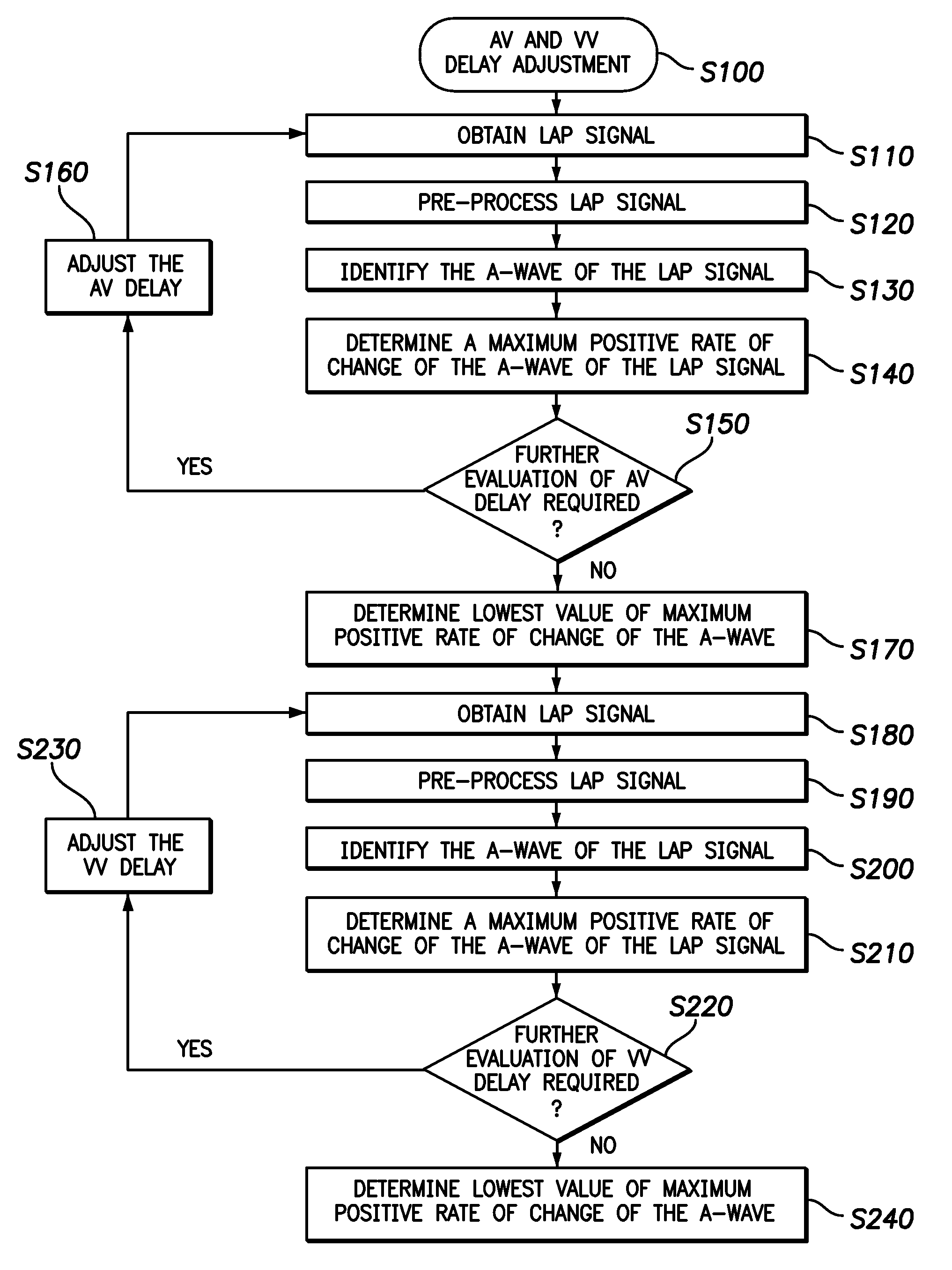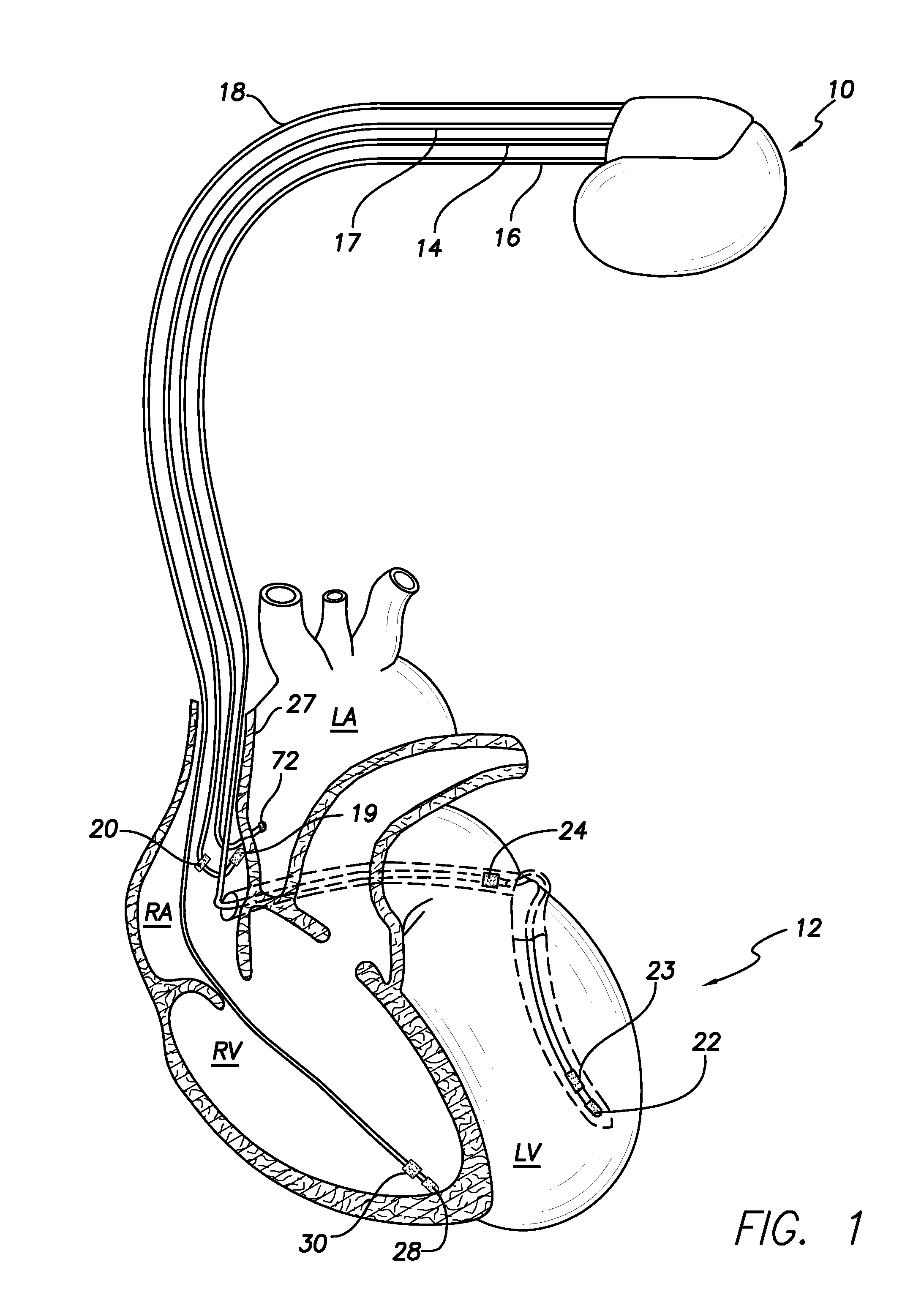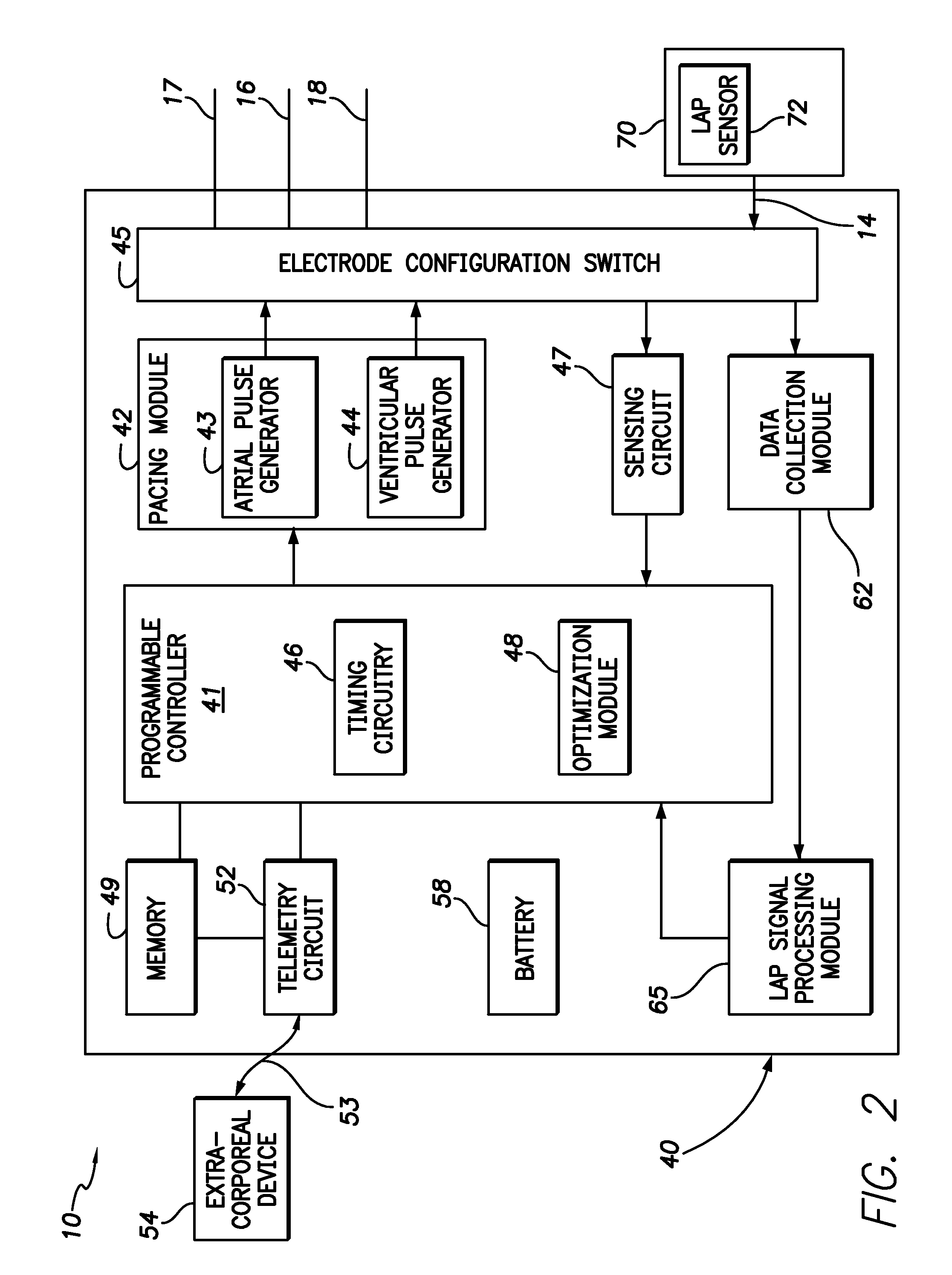Method and system for stimulating a heart of a patient
a technology for stimulating the heart of a patient and a system, applied in the field of implantable medical devices, can solve the problems of increasing the prevalence of heart failure, the optimal method for monitoring the effects of crt is currently under debate, and the medical community has not fully accepted any of the proposed techniques, etc., to achieve enhanced hemodynamic performance, efficient utilization, and enhanced hemodynamic performance
- Summary
- Abstract
- Description
- Claims
- Application Information
AI Technical Summary
Benefits of technology
Problems solved by technology
Method used
Image
Examples
Embodiment Construction
[0033]The following is a description of exemplifying embodiments in accordance with the present invention. This description is not to be taken in limiting sense, but is made merely for the purposes of describing the general principles of the invention. It is to be understood that other embodiments may be utilized and structural and logical changes may be made without departing from the scope of the present invention. Some embodiments of the present invention relate generally to implantable pressure sensors but, however, even though particular types of pressure sensors are mentioned herein, the present invention is not limited to pressure sensors but may include other types of hemodynamic sensors such as, accelerometers, blood flow probe, load indicators which react to geometrical changes, heart sound sensors, or photoplethysmography sensors or similar sensors.
[0034]Referring first to FIG. 1, one implementation of the present invention relating to a system including an implantable ca...
PUM
 Login to View More
Login to View More Abstract
Description
Claims
Application Information
 Login to View More
Login to View More - R&D
- Intellectual Property
- Life Sciences
- Materials
- Tech Scout
- Unparalleled Data Quality
- Higher Quality Content
- 60% Fewer Hallucinations
Browse by: Latest US Patents, China's latest patents, Technical Efficacy Thesaurus, Application Domain, Technology Topic, Popular Technical Reports.
© 2025 PatSnap. All rights reserved.Legal|Privacy policy|Modern Slavery Act Transparency Statement|Sitemap|About US| Contact US: help@patsnap.com



